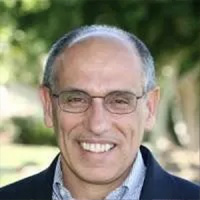Small percentages add up. Medicare spends over $900 billion a year on its 65 million beneficiaries, while Medicaid spends over $700 billion annually on its 85 million beneficiaries. The pool of potential healthcare fraud extends even further to the privately insured. And healthcare fraud itself exists on a wide spectrum, ranging from a one-off act by a single individual to a complex recurring scheme with multiple conspirators.
Fighting healthcare fraud requires a collaborative effort between providers, patients, administrators, and the public. It also requires greater awareness about what healthcare fraud is—and what it isn’t. Read on to learn more about upcoding, unbundling, and other forms of healthcare fraud.
Meet the Expert: Louis Saccoccio, JD

Louis Saccoccio is the CEO of the National Health Care Anti-Fraud Association (NHCAA), the leading national organization focused exclusively on the fight against healthcare fraud. He earned his BS in mathematics from the US Naval Academy and his JD from Harvard Law School.
Prior to his role at the NHCAA, Saccoccio served as general counsel and then as senior vice president of professional services for America’s Health Insurance Plans (AHIP), a political advocacy and trade association of health insurance companies.
Understanding Upcoding and Unbundling
“The rules for Medicare are so confusing as to what you can bill for, what the codes are, and everything else, that some practitioners and administrators think that what the government calls healthcare fraud is really just a bunch of errors being made,” Saccoccio says. “But that’s not the case: there really is deliberate, extensive fraud that occurs. And it’s not just folks that made a mistake or didn’t know what the rules were.”
There are approximately 7,800 current procedural technology (CPT) codes used by the healthcare system, each representing a procedure, treatment, condition, or drug reimbursable by health insurance in the United States. Each also has a corresponding cost based upon its complexity, urgency, and severity.
Upcoding occurs when a healthcare provider submits a billing code for a more complex service than the one they provided to secure an inflated reimbursement from a payer. According to Whistleblowers International, upcoding cost publicly-funded medical assistance programs an estimated $11 billion between 2002 and 2012.
“On the individual practitioner side, the average physician or physician group practice should make sure their staff have gotten proper training about coding,” Saccoccio says. “They should also have a compliance plan in place to make sure the ones doing coding and billing know what the rules are, and if they see something that may be wrong, that they report it and correct it.”
It’s not always just individuals. In 1998, GlaxoSmithKline paid a $325 million fine after settling with the Department of Justice over civil charges that GSK bundled blood tests under a cheaper billing package, then unbundled them when seeking reimbursement, billing for some services that were never even ordered.
The Larger Landscape of Healthcare Fraud
“When it comes to the public, there’s a lack of information, a lack of understanding around how much healthcare fraud is out there,” Saccoccio says. “A lot of the cases we see are broader types of fraud.”
Some of the most egregious forms of healthcare fraud include billing Medicare for equipment, services, and patients that don’t exist and racking up phony charges in the hundreds of thousands, or millions, of dollars. Durable medical equipment fraud constitutes some of the largest and most brazen cases, complete with sham offices, bogus referrals, and money laundering schemes.
Healthcare fraud impacts everyone. In Medicare fraud, it picks the pocket of the taxpayer; in private insurance fraud, the financial cost comes in the form of higher premiums. Patients can be impacted in tangibly dangerous ways, subjected to unnecessary treatments or phony treatments that can harm their health. The reputation of the healthcare system as a whole suffers from the actions of a few unscrupulous actors.
“It really varies when it comes to who is committing healthcare fraud,” Saccoccio says. “It could be a healthcare provider who came into the system honestly, then went in the wrong direction. It could be someone who commits fraud as a business. The majority of fraud comes from bigger fraud schemes, but there’s also some nickel and diming going on.”
The Future of Healthcare Fraud and Healthcare Fraud Prevention
As technology evolves, so does the landscape of healthcare fraud. The Covid-19 pandemic facilitated the expansion of telehealth services—and with it, fraud surrounding those services. Some percentage of funding from the public health emergency ended up in undeserving hands. But technology doesn’t only serve fraudsters: it helps prevent fraud, too.
“The key now in healthcare fraud, from the standpoint of the payers, at least, is trying to get out ahead of the curve: prevention, as opposed to pay-and-chase,” Saccoccio says. “The way you prevent healthcare fraud is, one, through data analytics, and, two, through information sharing.”
Data analytics is a powerful fraud prevention tool. By analyzing claims data and looking for outliers, it’s possible to identify instances of fraud and cut off avenues for more in the future. But individual payers can only see a small piece of the overall picture: information sharing across public and private payers gives everyone better visibility.
To that end, the National Health Care Anti-Fraud Association (NHCAA) was formed in 1985 as a private-public partnership to promote sharing anti-fraud information. NHCAA has 90 health insurance company members and more than 200 Federal and state partners.
Additionally, the Healthcare Fraud Prevention Partnership (HFPP) was formed as a public-private partnership in 2012. Its initial 21 partners have grown to 286, making HFPP uniquely positioned to examine emerging trends by analyzing aggregated claims data and developing key recommendations and strategies to address them.
“The healthcare system is so large, and so complex, that you’re never going to be able to totally do away with all fraud and abuse,” Saccoccio says. “But, certainly, progress is being made.”

Matt Zbrog
WriterMatt Zbrog is a writer and researcher from Southern California. Since 2018, he’s written extensively about trends within the healthcare workforce, with a particular focus on the power of interdisciplinary teams. He’s also covered the crises faced by healthcare professionals working at assisted living and long-term care facilities, both in light of the Covid-19 pandemic and the demographic shift brought on by the aging of the Baby Boomers. His work has included detailed interviews and consultations with leaders and subject matter experts from the American Nurses Association (ASCA), the American College of Health Care Administrators (ACHCA), and the American Speech-Language Hearing Association (ASHA).